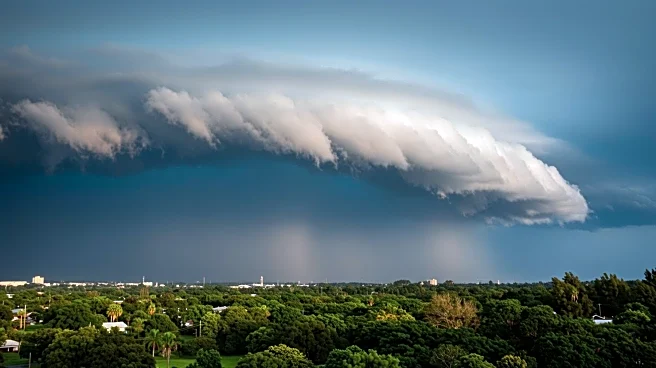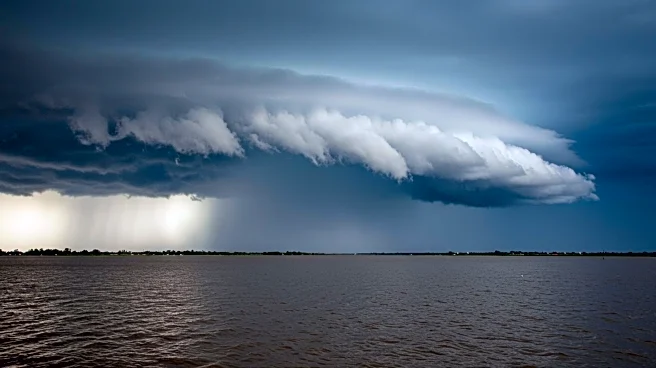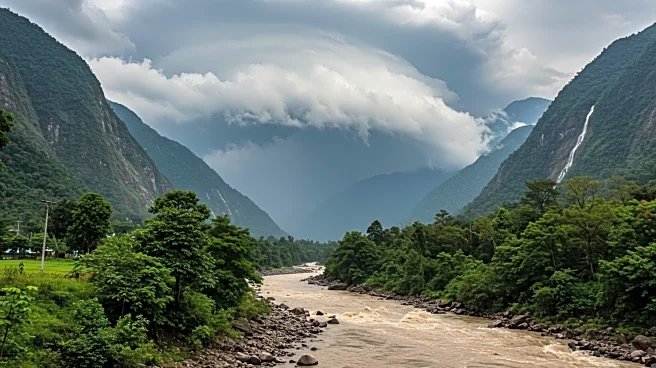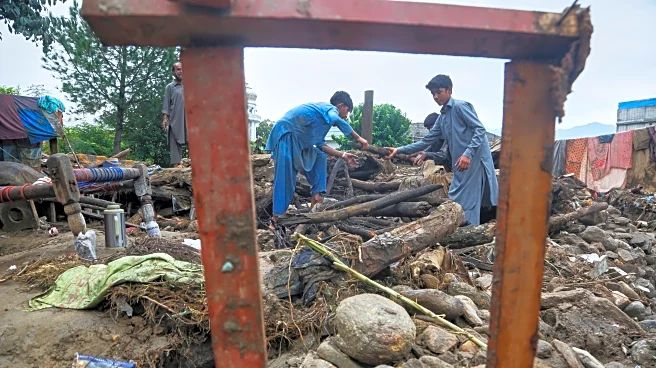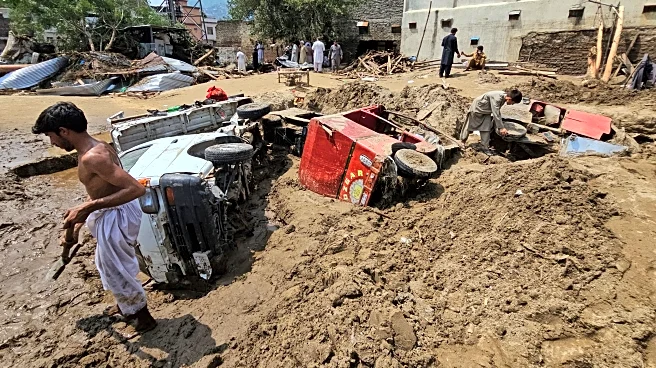What's Happening?
South Asia has been severely affected by heavy monsoon rains, resulting in flash floods and landslides that have claimed over 300 lives. The hardest-hit areas include northern Pakistan, Indian-controlled Kashmir, and northern Bangladesh, where thousands have been displaced. The rainfall has been significantly higher than previous years, exacerbating the situation. Experts attribute the increased rainfall to climate change, heavy industrialization, and deforestation. The affected regions are struggling with inadequate infrastructure and environmental awareness, which have compounded the impact of the natural disaster.
Why It's Important?
The situation in South Asia serves as a stark reminder of the global challenges posed by climate change. The increased frequency and intensity of such weather events highlight the urgent need for international cooperation in addressing climate-related issues. The disaster underscores the vulnerability of communities living in flood-prone areas, emphasizing the importance of sustainable development and infrastructure planning. The impact on South Asia could have broader implications for global climate policy, potentially influencing discussions and actions in the U.S. and other countries.
What's Next?
Authorities in South Asia are warning of continued heavy rainfall, which poses further risks to remote and impoverished communities. Efforts to mitigate the impact of climate change, such as reducing carbon emissions, require coordinated global action. The situation may prompt international aid and support for affected regions, as well as increased focus on climate resilience strategies. The ongoing challenges could lead to policy shifts and increased investment in sustainable infrastructure and environmental protection.
